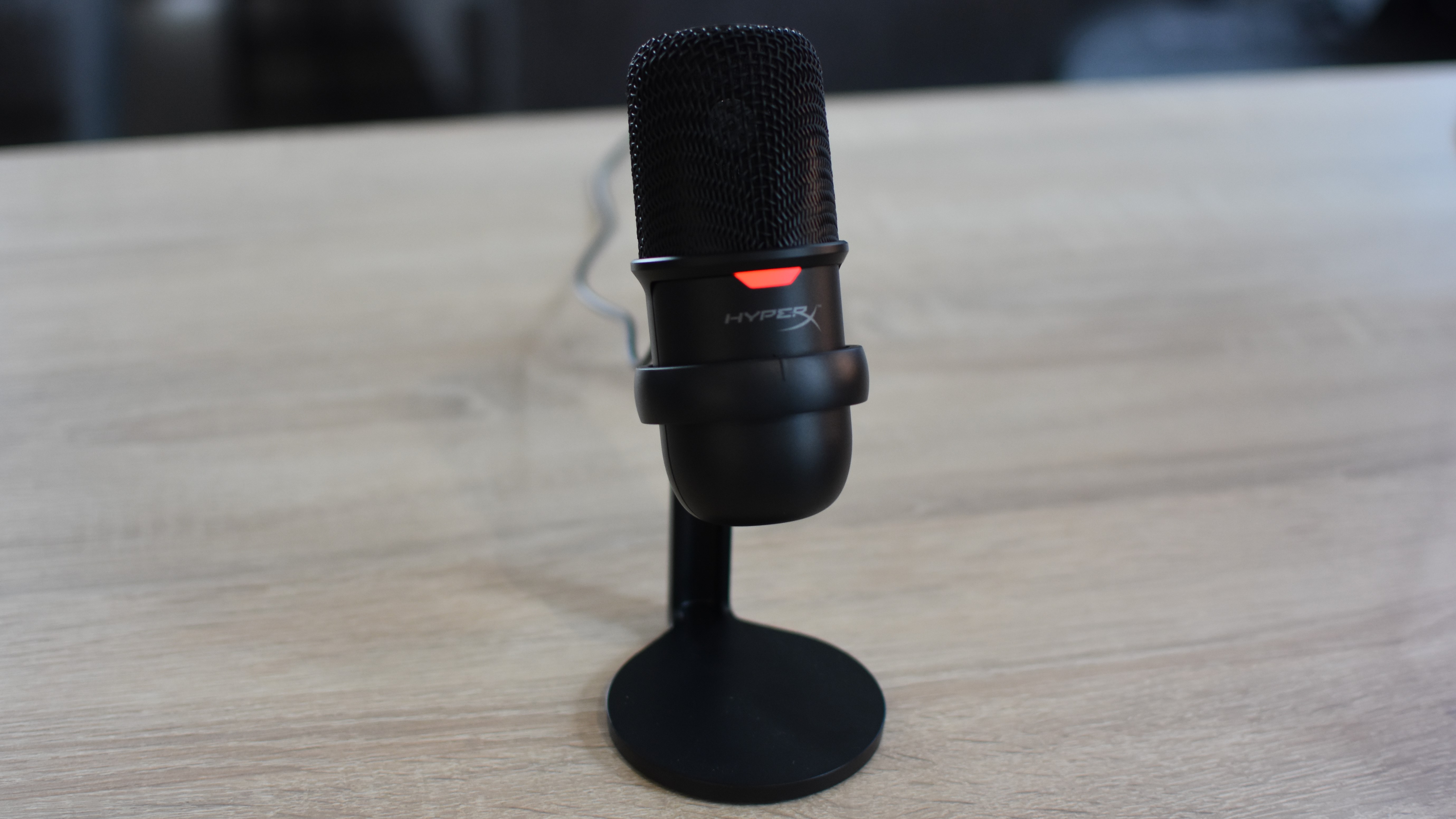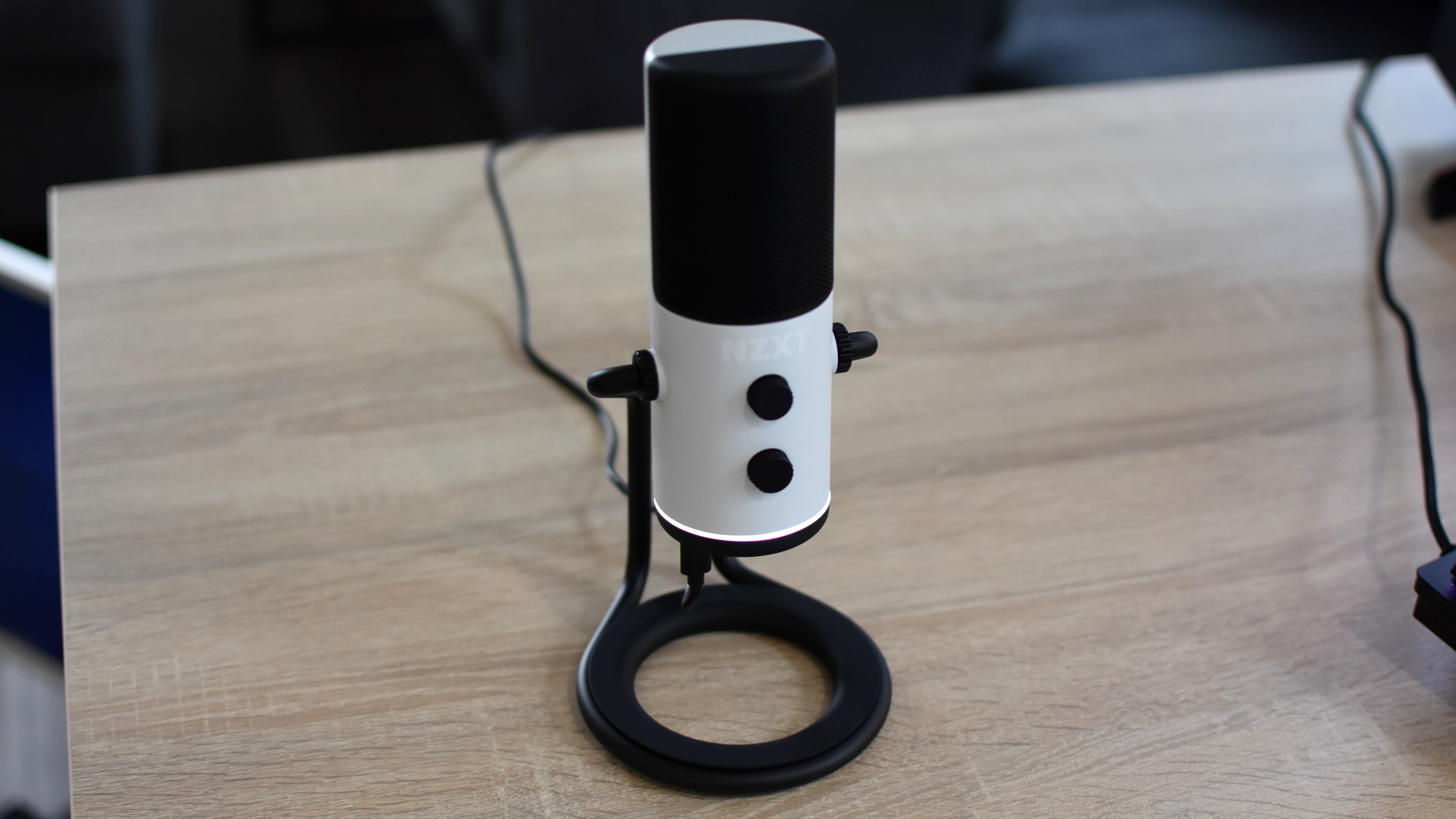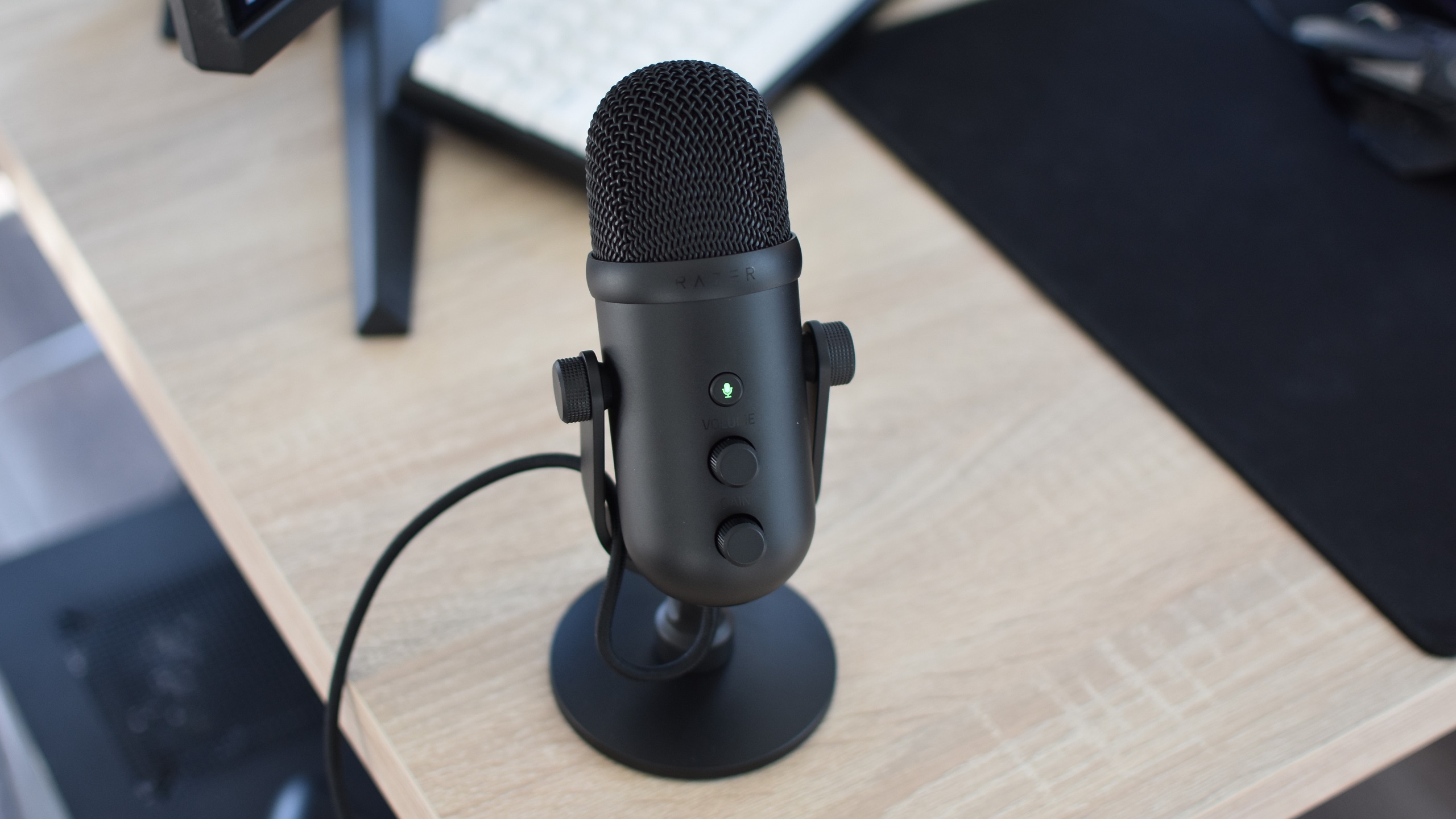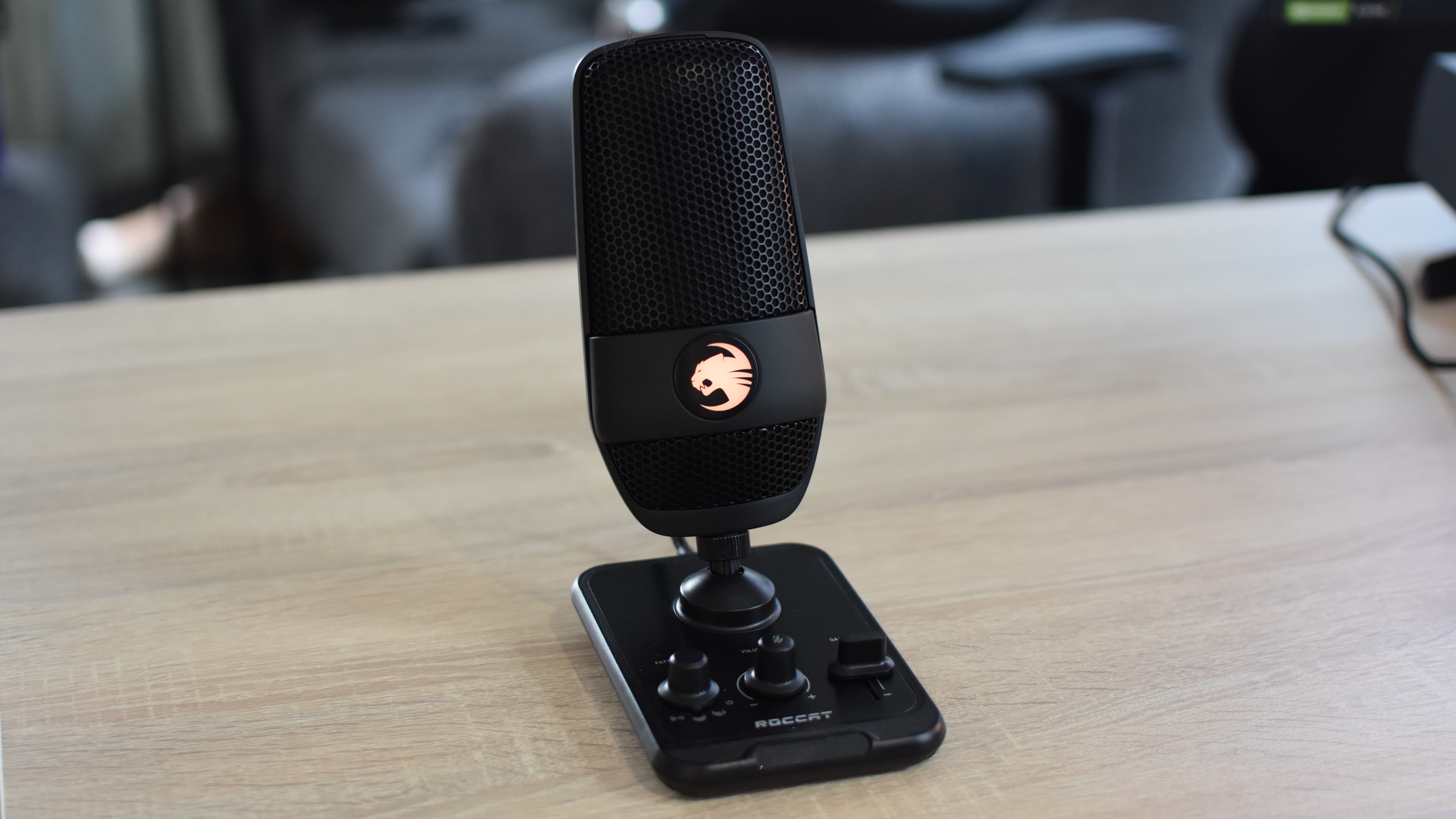Not that more commonly-used headset mics are insufficient – indeed, several of the best gaming headsets make it hard to tell the difference from a standalone condenser. But something I’ve often found when testing headsets is that the focus is very much on delivering good sound to the wearer, not whoever’s on the other end of the line. Switching microphone duties to something more dedicated will all but guarantee the elimination of fuzziness and muffling effects that can plague lower-quality headset mics. Go for a USB model, and you can save yourself any setup headaches as well. In choosing microphones to test for this list – and not all of them made the cut – I stuck solely to plug-and-play USB mics, so whichever one you choose will only need a spare USB port (and an automatic driver download) to get started. Click the links below to jump to a specific model, or simply keep scrolling for the full list of the best gaming microphones.
Best gaming microphones for PC 2023
Neat Bumblebee II – the best gaming microphone overall HyperX SoloCast – the best cheap gaming microphone for PC NZXT Capsule – the best gaming microphone for easy setup Rode NT-USB Mini – the best compact gaming microphone Razer Seiren V2 Pro – the best Razer gaming microphone Roccat Torch – the best RGB gaming microphone
Neat Bumblebee II
The best gaming microphone overall Neat’s studio mic experience pays off with the more accessible Neat Bumblebee II. Voice input comes through beautifully warm, rich, and detailed, and while the stand isn’t height-adjustable, I could sit with the condenser capsule a good 30cm away and it would still record my words clearly and cleanly. At least, it did after raising the gain, but this was easily done using the multifunctional dial on the front. And it didn’t produce the harsh, slightly distorted effect that comes with cranking up the gain on lesser mics. There’s also a dedicated mute button, and a 3.5mm headphone jack on the underside – all the essentials. The gaming microphone that previously held this spot – the JLab Talk – remains excellent, and is cheaper than the Bumblebee II. But Neat’s effort has better build quality, a smaller desk footprint, and is ever-so-slightly better at avoiding unwanted reverb when recording. As such, it’s the new top dog. Bee. Whatever.
HyperX SoloCast
The best cheap gaming microphone for PC From the makers of some of the best gaming mice and best gaming keyboards comes the HyperX SoloCast, a cute lil’ mic with some strikingly fine-tuned recording capabilities. Even without the aid of any onboard controls, save for a touch-sensitive mute button, the SoloCast’s detailed and well-balanced sound profile is noticeably easier on the ears than any cheap gaming microphone I’ve used in the past. There’s only one recording pattern, cardioid, but that’s the only one you need for gaming purposes anyhow. I like how adjustable the stand is, too: besides the expected tilt adjustment, it can pivot the whole microphone sideways, which could help it fit underneath a monitor if you’re short on desk space. However, this stand also has a bit of a weakness against vibrations: I noticed the impact of my keyboard inputs would travel through my desk and get picked up by the SoloCast as small but distracting bumping sounds. If you’re also a heavy typist, you may need to lighten up, equip a boom stand or stick with push-to-talk. Otherwise, it sounds great for the money.
NZXT Capsule
The best gaming microphone for easy setup Almost everything about the NZXT Capsule is designed to minimise faff. There’s only one recording pattern, no special software required, and what the stand lacks in height or pivot adjustment it makes up for in sturdiness and grippiness. Just plug it in, point it at your face and speak. All the mics in this list have a similar simplicity to them, to varying extents, but even the Neat Bumblebee II can sound off if you don’t get the gain level right. The Capsule sounds lovely without paying as much mind to levels and dials, which may well appeal if you’re just too used to the immediacy of putting on a headset. This is also one of the nicer-looker USB microphones I’ve seen, with a sleek cylindrical shape (not unlike the EPOS B20) and positively Scandi-chic metal stand. If you don’t fancy the two-tone design of this white model, there’s an all-black version as well.
Rode NT-USB Mini
The best compact gaming microphone I’ve always liked the Blue Yeti Nano, the cheaper, shrunken-down take on Blue’s flagship gaming mic. Yet even that looks enormous next to the Rode NT-USB Mini, a literally palm-sized microphone that nonetheless has the weight and build quality of a quality peripheral. The performance, too – when the NT-USB Mini is close enough to your mouth, its recording quality is impeccably detailed and gleamingly clean. Never mind games, you could host a radio show with this thing, and again that’s without the need for any software tweaks. The catch? If the NT-USB Mini isn’t close to your mouth, it still sounds better than any headset mic, but your voice will be joined by unwanted reverb. This will be the case with pretty much any microphone but with the NT-USB Mini in particular, its squat stand might keep it a little too distant, especially if you’re on the taller side. Consider investing in a boom arm as well, like Rode’s own PSA1+, as getting the position right will see you rewarded by genuinely superb sound quality.
Razer Seiren V2 Pro
The best Razer gaming microphone Much like the NT-USB Mini, the Razer Seiren V2 Pro benefits enormously from being stuck on a boom stand; the richness and depth of voice quality shoot up when moving this cardioid-only mic up from desk height to within a few inches of your face. Once that setup is out of the way, however, the Seiren V2 Pro is a perfectly pleasant gaming microphone. Its high-pass filter does well to reduce background noise, and the physical design is much more restrained than you might expect from Razer hardware. It feels beautifully solid and well-built, too. The essential controls are all onboard, though you can also dig into the Razer Synapse software for finer gain and headphone volume control - or to switch between 48mHz and 96mHz sampling rates. If you already own Razer peripherals, having mic customisation in the same place might be useful - perhaps even to the extent of buying this over cheaper microphones, should your desk be utterly littered with green snake logos.
Roccat Torch
The best RGB gaming microphone True to its name, the Roccat Torch goes in hard on the illuminations: the front Roccat logo and the light bars running up either side of the microphone will pulse and change colour as you fiddle with settings, and I particularly like how the bars appear to fill or empty as you adjust the gain slider, EQ-style. Or you can just turn it all off. Your call. Recording-wise, the Torch sounds closer to decent than amazing, but even compared to its more detailed-sounding rivals it has an enviable assortment of nifty features. These range from the contact-free mute sensor (avoiding any audible knocking noises that might occur just before pressing a physical button) to an array of mixer-esque controls on the base. Even if you disconnect the microphone to stick on a different stand, it can still connect to this control hub via an extended USB-C cable that’s included in the box. One of the many dials and switches also enables Whisper mode, a more sensitive alternative to the standard cardioid pattern. There’s a tad more background noise in this mode, and generally sounds more echoey, but does indeed work well at picking up your speech you’re trying to keep your voice down.
Gaming microphone recording patterns explained
Mics like the Blue Yeti, JLab Talk and Roccat Torch all boast of having different recording patterns, but the difference between them may not be self-evident if you aren’t caught up on various audio jargon. Essentially, these patterns are different recording modes that determine where, in the physical space, the microphone will focus on recording. The most common pattern, cardioid, has the microphone focus on recording the sound directly in front of it. Where the user is sitting, in other words. A bidirectional pattern will pick up sound both directly in front of and directly behind the mic, whereas an omnidirectional pattern records in a full 360-degree radius. Some microphones also have a stereo pattern setting, which records not just the sounds around the microphone but their relative positions. These all have their uses, like bidirectional for recording interviews or stereo for recording music, but cardioid is by far the best suited for games. Not only is there no need to record anything other than your own voice for comms purposes, but ideally the mic should be picking up other sounds as little as possible – sounds like the clicking of your mouse and keyboard, or the output from speakers if you’re not using a headset. Cardioid works best for this because even if some of these background sounds seep through, your voice should always drown them out because it’s the only sound originating within the intended pattern.




